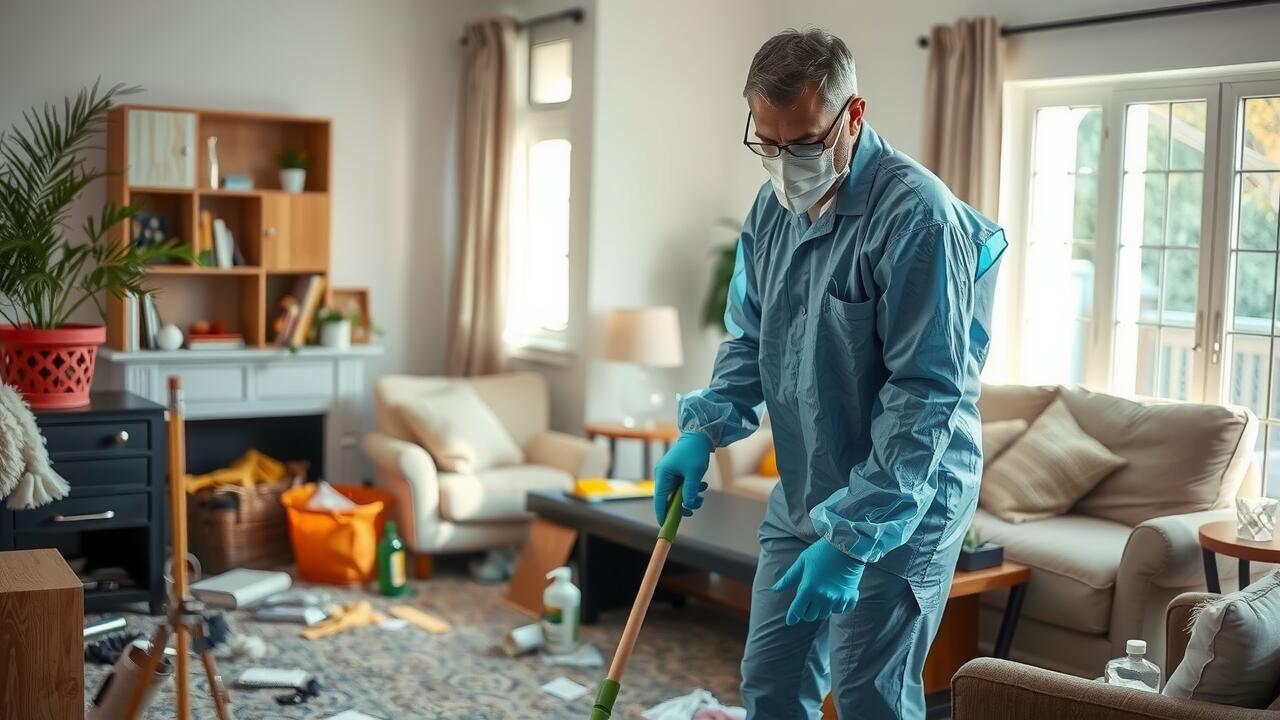
Insurance Coverage for Cleanup Costs
Homeowners often have concerns about the financial burden associated with cleanup costs after a disaster. Understanding insurance coverage for such incidents can bring peace of mind. Many standard homeowners’ insurance policies include provisions for cleanup costs, but coverage can vary widely based on the specific circumstances and the policy’s terms. It’s essential to review your policy and consult with your insurance agent to clarify what is included and excluded in your coverage.
For incidents requiring specialized cleanup services, such as trauma cleanup, coverage may be more complex. In Grove City, Ohio, homeowners should be aware that while some insurers may cover the costs related to trauma cleanup, others may not. This can lead to unexpected expenses that can quickly accumulate. Carefully examining the details of your insurance policy and exploring available add-ons can help ensure you are adequately covered for these types of cleanup needs.
Types of Policies That Include Cleanup
Certain insurance policies specifically address cleanup costs associated with various incidents. Homeowners insurance often covers basic cleanup, especially if the damage results from covered perils like fire or water intrusion. Additional endorsements may be necessary for comprehensive coverage, particularly for specialized services such as mold remediation or biohazard cleanup. For residents in need of Trauma Cleanup in Grove City, Ohio, understanding the nuances of their policy can ensure they don’t incur unexpected expenses.
Commercial insurance policies may also provide coverage for cleanup costs, especially for businesses involved in hazardous materials or those requiring extensive restoration after an incident. General liability insurance might include provisions that cover cleanup from third-party claims. However, the specifics can vary significantly among policies, emphasizing the importance of reviewing coverage limits and exclusions. Business owners in Grove City should consult with their insurance agents to clarify what their policies will cover regarding Trauma Cleanup in Grove City, Ohio.
Potential Hidden Costs
Cleanup after any traumatic event can reveal unexpected expenses that aren’t immediately apparent. These potential hidden costs can include specialized permits required for disposing of hazardous materials or compliance with local environmental regulations. Homeowners may overlook the need for inspections and assessments to ensure that the area is safe and free from any lingering risks. The financial implications can add up quickly, especially if the cleanup is extensive and requires professional intervention.
Furthermore, when dealing with something as sensitive as Trauma Cleanup in Grove City, Ohio, the costs can expand beyond initial estimates. Additional services, such as odor removal treatments, decontamination, or even restorative work for structural integrity, can contribute to escalating expenses. Many may find that a comprehensive approach to the cleanup process is essential for not only safety but also peace of mind, leading to further financial considerations that should be planned for in advance.
Permits and Environmental Fees
Aftermath cleanup often involves navigating regulations that can introduce additional costs, particularly when it comes to permits and environmental fees. Depending on the type of incident, such as a biohazard situation or hazardous material spill, local or state agencies may require specific permits to ensure compliance with safety and environmental standards. These permits can range in cost and may require inspections or assessments before the cleanup process can commence, adding time and money to the overall project.
In areas like Grove City, Ohio, the need for environmental fees can also arise if cleanup efforts disrupt local ecosystems or require special handling of materials. These fees are designed to support environmental protection initiatives and can vary based on the type and scope of the cleanup required. For those dealing with trauma cleanup in Grove City, Ohio, understanding these potential expenses is essential for budgeting effectively and ensuring all legal requirements are met ahead of initiating cleanup efforts.
DIY Cleanup vs. Professional Services
Taking on a DIY cleanup after a traumatic event can initially seem like a cost-effective solution for homeowners. Many believe that handling the aftermath themselves will save money, as it eliminates labor costs associated with hiring professionals. Certain tasks may be manageable for those with the right tools and skills. However, this approach often overlooks the potential risks involved, such as exposure to hazardous materials or improper disposal of contaminated items.
On the other hand, professional services, particularly for sensitive situations like Trauma Cleanup in Grove City, Ohio, provide a level of expertise that DIY efforts may lack. Trained professionals understand the complexities of cleanup, including safety protocols and the necessary equipment for thorough decontamination. While the upfront cost may be higher, the benefits of quick and efficient cleanup can outweigh the risks associated with attempting it independently.
Cost-Effectiveness Analysis
When considering trauma cleanup in Grove City, Ohio, it is essential to weigh the financial implications of DIY efforts against hiring professionals. While undertaking the task independently might seem like a way to save money, the risks involved can lead to increased expenses. Hidden dangers, such as biohazards or structural issues, may not be immediately apparent. A lack of proper training can also result in inadequate cleanup, potentially leading to long-term health risks or property damage that necessitates further expenditures.
On the other hand, investing in professional services not only provides a thorough and safe cleanup but also ensures compliance with local regulations. Professionals bring specialized equipment and expertise, which can save time and minimize stress during an already challenging time. Their knowledge of safety protocols and disposal methods can prevent potential liabilities. Overall, assessing the cost-effectiveness of both options involves considering immediate costs alongside long-term implications for health and property value.
FAQS
What factors influence the cost of aftermath cleanup?
The cost of aftermath cleanup can be influenced by several factors, including the type of damage (e.g., water, fire, mold), the extent of the cleanup needed, any permits or environmental fees required, and whether you choose DIY methods or professional services.
Does homeowners insurance cover cleanup costs?
Many homeowners insurance policies do cover cleanup costs, but it depends on the specifics of your policy. It’s essential to review your coverage or speak with your insurance agent to determine what is included.
Are there any hidden costs associated with aftermath cleanup?
Yes, potential hidden costs can include permits, environmental fees, and unexpected damage found during the cleanup process. It’s crucial to factor these into your budget to avoid surprises.
Is DIY cleanup cheaper than hiring professionals?
While DIY cleanup may seem cheaper initially, it can lead to higher costs if improper techniques cause further damage. Professional services often provide expertise and efficiency that can save money and time in the long run.
How can I find out if my insurance policy includes cleanup costs?
To find out if your insurance policy includes cleanup costs, review your policy documents or contact your insurance provider directly for clarification on your coverage.
